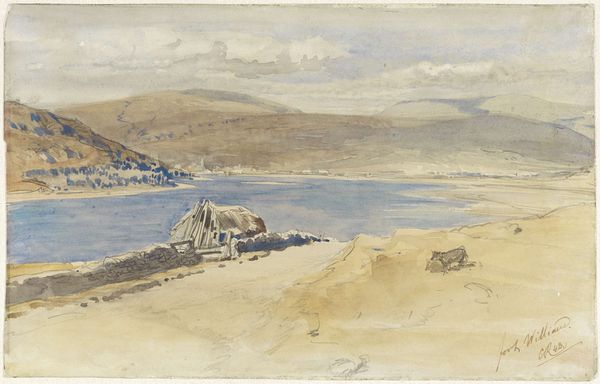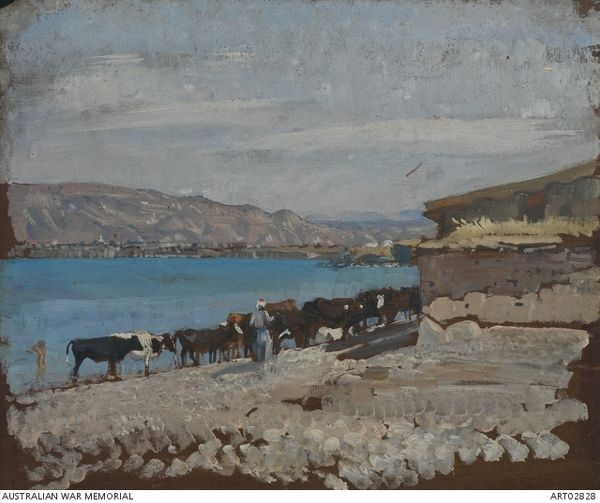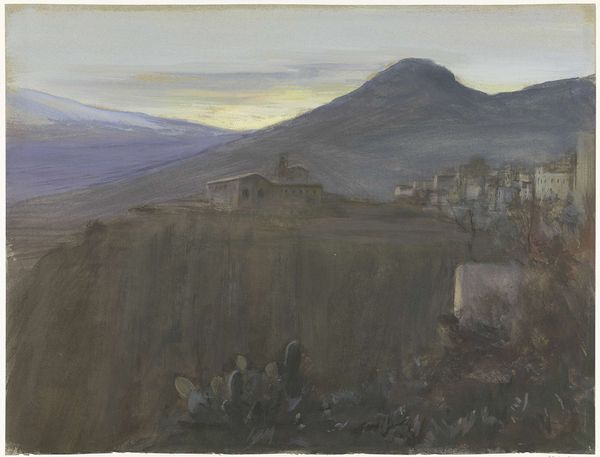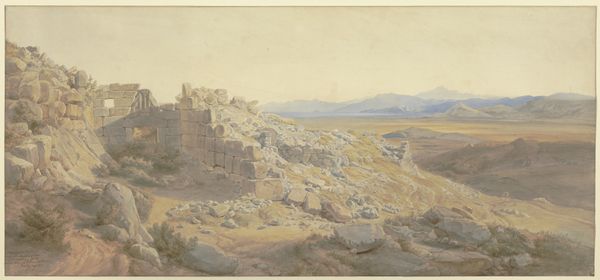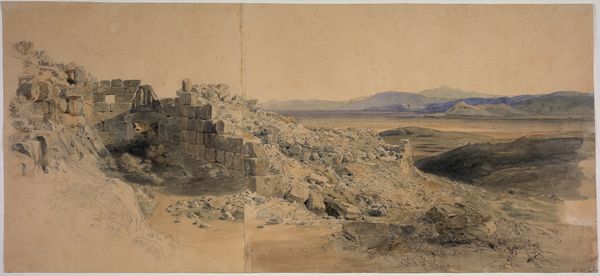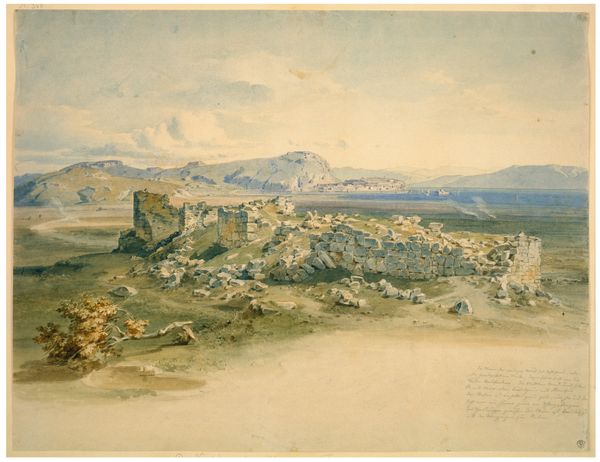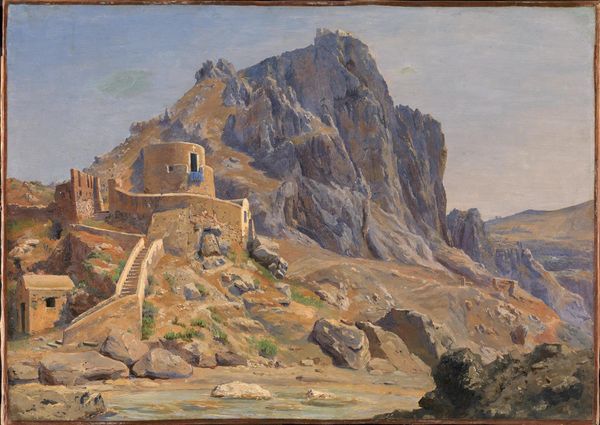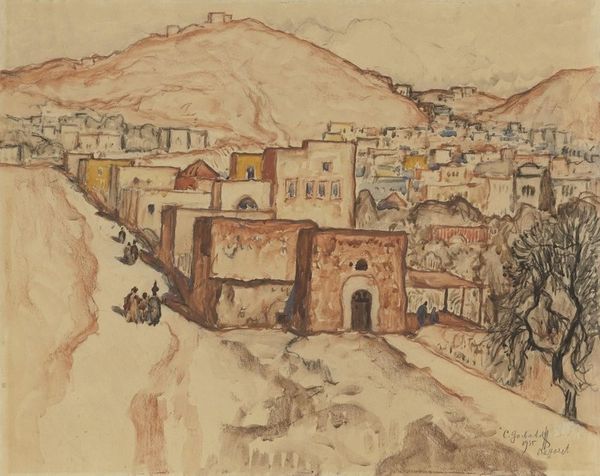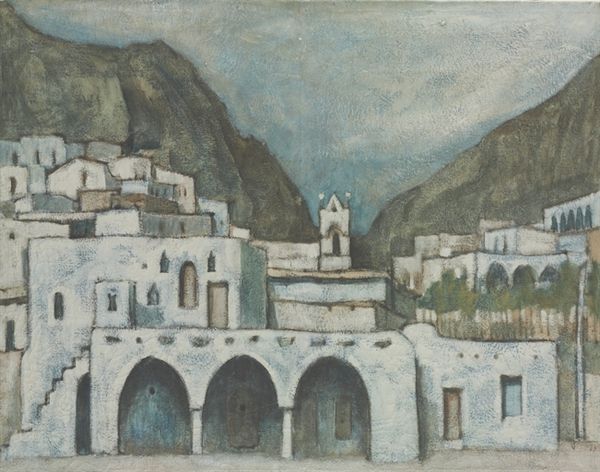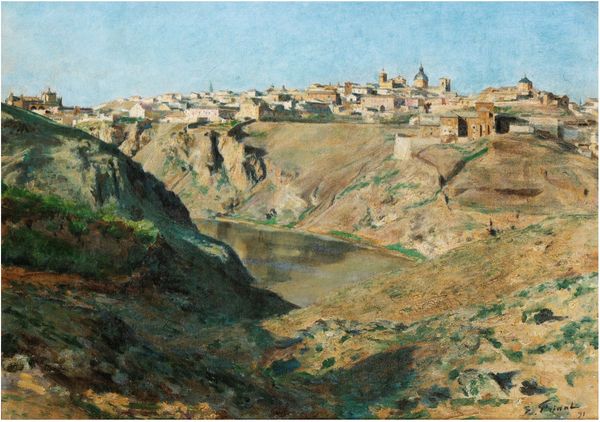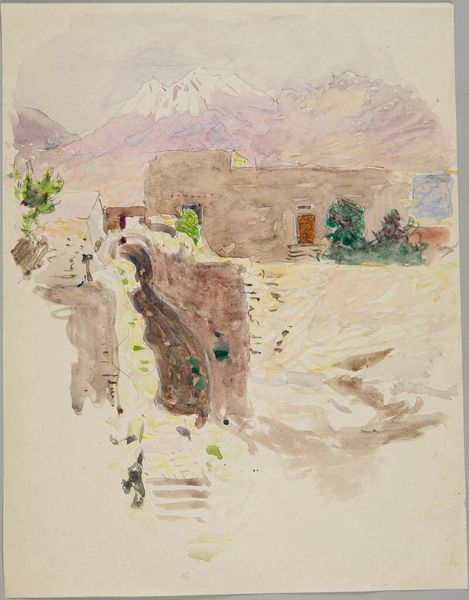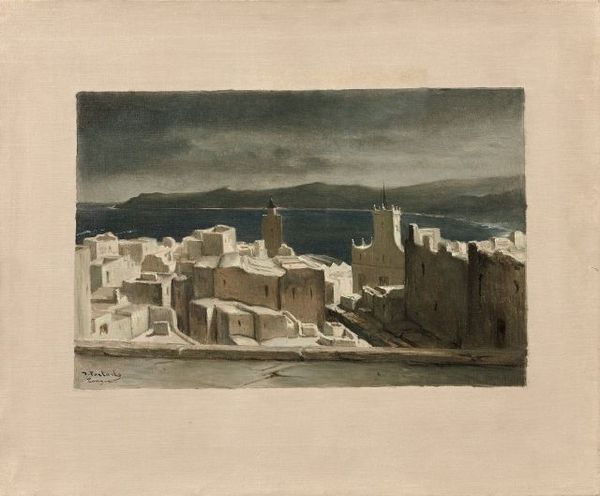
Copyright: Public domain
Curator: George Washington Lambert painted this landscape, entitled "Tiberias," in 1919 using oil paint in a plein-air style. Editor: My initial reaction is quiet. It’s a bit dusty, faded somehow, like looking at an old photograph rescued from an attic. It feels distant, even though the brushstrokes have an immediacy. Curator: It’s intriguing you use the word distant, because it’s relevant in several ways. Lambert, an Australian artist, was working as an official war artist, and this work reflects Britain's Palestine campaign during World War I. The painting's style situates it in dialogue with orientalist tropes, despite its modern impressionist treatment. What we must consider is the representation of this city and landscape in the context of colonial power dynamics. Editor: That definitely shifts things. Suddenly that quiet distance feels…loaded. Knowing it was painted by a war artist gives it a new tension. It is like he’s both capturing the light on the buildings and surveying the scene, almost claiming it visually. The colours, pale blues and browns, add to that slightly melancholic feel – as though he's depicting something already lost or transformed by conflict. Curator: Exactly. Lambert’s style can be understood as participating in the visual rhetoric that positions Western artists as interpreters, and almost possessors, of the East. Even his choice of plein-air—painting outside, en plain air—adds to this understanding. By placing himself directly in the landscape, Lambert is reinforcing this relationship of observer and observed. He’s a Westerner literally *in* the landscape. Editor: It is an interesting tension isn't it, the act of creation, the painterly moment, colliding with historical complexities, the impact of imperialism. Makes you think about whose gaze, whose story, is truly being told, or even permitted. It almost asks if beauty and privilege are destined to walk hand in hand. Curator: Precisely, and grappling with those questions enriches our understanding, particularly considering Lambert's positionality and the lasting impacts of this history on contemporary power structures and cultural representations. Editor: A landscape painting that asks questions, challenges assumptions – who would have thought? I shall never look at a "view" quite the same way again.
Comments
No comments
Be the first to comment and join the conversation on the ultimate creative platform.

